So, you're thinking about getting a trampoline for your home workouts, huh? That's awesome! But then you see them – some with springs, some with these thick bungee cords. It's like choosing between a bouncy castle and a cloud. Which one is actually better for you? We're going to break down the whole Bungees versus springs trampolines thing, looking at how they feel, how long they last, and what kind of workout you actually get. Let's figure out which one is your perfect match.
Key Takeaways
- Bungee trampolines offer a quieter, softer bounce that's easier on your joints compared to traditional spring trampolines.
- Spring trampolines tend to provide a firmer, more responsive bounce which some users prefer for certain exercises.
- Durability can vary; while springs are robust, bungees might wear out faster but offer a more silent experience.
- Assembly can be a challenge for both types, with some bungee models experiencing slippage issues.
- Your choice between bungees versus springs trampolines should depend on whether you prioritize joint comfort and quietness or a firmer, more energetic rebound.
Understanding The Bounce: Bungees Versus Springs Trampolines
When you're looking at mini-trampolines, or rebounders as they're often called, the biggest difference you'll notice right away is how they're built to bounce. It really comes down to the suspension system – basically, what connects the jumping mat to the frame. You've got two main players here: traditional metal springs and stretchy bungee cords. Each one gives you a different kind of bounce, and understanding that is key to picking the right one for you.
The Core Difference In Suspension Systems
Think of it like this: springs are the old-school, tried-and-true method. They're usually made of steel and hook onto the mat and frame, giving you a pretty firm, energetic rebound. Bungee cords, on the other hand, are made of elastic material. They wrap around and connect the mat to the frame, and they tend to give a softer, more cushioned bounce. It's not a huge difference in terms of just getting air, but it changes how the whole thing feels when you're jumping.
Impact On Bounce Quality And Feel
So, what does this mean for your actual bounce? Springs tend to give you a more responsive, almost aggressive rebound. You get a lot of energy back with each jump, which can feel really invigorating. It’s a classic bounce that many people are used to. Bungee cords offer a quieter, smoother ride. The bounce is more forgiving, absorbing more of the impact. This can feel gentler on your body, especially your joints. Some people describe it as jumping on a cloud, while others feel springs give a more powerful push-off. It really comes down to personal preference and what kind of workout feel you're going for.
Durability And Maintenance Considerations
Both systems have their pros and cons when it comes to how long they last and what kind of upkeep they need. Metal springs are tough, but they can get noisy over time and might eventually need replacing if they stretch out or break. Plus, they can be a bit of a hazard if you're not careful, potentially pinching fingers or toes. Bungee cords are generally quieter and easier on the body, but they can wear out faster, especially with heavy use. You might find they lose their elasticity over time, leading to a less bouncy rebound. Some users have even reported bungee cords slipping, particularly when the rebounder is stored away. Keeping an eye on the condition of either system is a good idea for a safe and effective workout.
The choice between springs and bungees isn't just about the bounce itself, but also about the overall experience – from the sound and feel to how it holds up over time. It's worth considering what matters most to you in a rebounder.
Joint Health And Comfort: A Key Differentiator
The Gentle Embrace Of Bungee Cords
When you think about trampolines, you might picture those old-school metal springs. But many modern rebounders, especially the bungee-corded ones, offer a totally different feel. These cords, usually made of strong elastic material, give a much softer, more cushioned landing. It's like bouncing on a cloud, honestly. This gentler rebound is a big deal if you've got sensitive knees, hips, or a back that acts up. The bungee system absorbs a lot of the shock, sending less of it jarring up through your body. This makes bungee trampolines a fantastic choice for anyone looking for a low-impact workout. It's especially good for folks dealing with arthritis or recovering from injuries.
The Firmer Feel Of Traditional Springs
Now, traditional spring trampolines have their own vibe. They tend to give a more energetic, responsive bounce. You feel a definite push-back from the springs, which can make the workout feel more intense and dynamic. Some people really like this firmer feel; it can feel more powerful and direct. However, this firmness also means more impact on your joints. It’s not necessarily bad, but it’s something to be aware of, especially if you’re not used to it or have any joint issues. Think of it like the difference between running on a track versus running on pavement – one is generally softer than the other.
Who Benefits Most From Each Type?
So, who should go for which? It really boils down to what your body needs and what you're looking for in a workout.
- Bungee Cord Rebounders: These are ideal for:
- Spring Rebounders: These might be better for:
Ultimately, the choice between bungee and springs comes down to personal preference and physical needs. It's about finding the rebounder that feels best for your body and supports your fitness goals without causing discomfort.
Performance And Workout Experience
Achieving A Silent, Smooth Rebound
When you're looking for a trampoline that lets you get your sweat on without disturbing the whole house, bungee models really shine. They're designed to be super quiet. Instead of that loud boing you might get from springs, bungees offer a much softer landing. This means you can do your workout early in the morning or late at night without worrying about waking anyone up. It’s a really nice change if noise is a big concern for you. Plus, that smooth rebound feels really good on your body, making the whole experience more pleasant. It’s like bouncing on a cloud, honestly.
The Energetic, Responsive Spring Bounce
Traditional spring trampolines, on the other hand, give you a different kind of energy. The bounce is often more pronounced, giving you a bigger lift with each jump. This can feel really exciting and make your workout feel more dynamic. If you're someone who likes a bit more power behind each movement, springs might be more your speed. They tend to have a more responsive feel, meaning you can really push off and get a good amount of air. It’s a classic bounce that many people are used to and enjoy for its sheer vigor. For those who want a workout that feels more like a high-energy activity, springs are a solid choice.
Versatility For Different Fitness Regimens
Both types of trampolines can be great for a variety of workouts, but they lend themselves to slightly different styles. Bungee trampolines are fantastic for low-impact cardio and exercises that focus on balance and control. Because the bounce is softer, it's easier to maintain stability and focus on precise movements. This makes them ideal for routines aimed at improving lymphatic drainage or for people recovering from injuries. You can really get a good cardio session in with bungee mini-trampolines, and it feels less jarring.
Spring trampolines, with their more powerful rebound, are excellent for high-intensity interval training (HIIT) and plyometric exercises. The extra bounce allows for higher jumps and more explosive movements, which can really boost your calorie burn. If you're looking to build power and agility, the responsiveness of springs is a big plus. They can handle more aggressive bouncing and are often favored by those who want a more intense, athletic workout. It really comes down to what kind of fitness goals you have and what kind of movement you enjoy most.
Assembly, Durability, And Potential Pitfalls
Alright, let's talk about putting these things together and how long they actually last. Because, let's be honest, nobody wants to buy a trampoline that falls apart after a month or feels like a construction project from hell.
Navigating The Assembly Process
Putting together a trampoline, whether it's bungee or spring-loaded, can sometimes be a bit of a puzzle. Some models are pretty straightforward, almost like snapping Lego bricks together. Others? Well, they can feel like you're trying to decipher ancient hieroglyphs. You might need a friend to help, especially if you're dealing with a larger unit or one that requires a lot of tensioning. The key is to read the instructions carefully, even if they seem a bit confusing at first. It's usually better to take your time than to rush and end up with a wobbly rebounder.
Here's a general idea of what to expect:
- Frame Setup: Usually, you'll connect the legs to the main frame. Make sure these are secure.
- Mat Attachment: This is where the suspension system comes in. For springs, you'll hook each one onto the frame and the mat. For bungees, you'll attach each cord. This can take a while and requires some muscle.
- Adding Legs/Stabilizers: Some trampolines have extra feet or stabilizers for added support.
- Handlebar (if applicable): If your rebounder has a handlebar, attaching that is usually one of the last steps.
Addressing Common Issues Like Bungee Slippage
Bungee trampolines are often praised for their quiet bounce, but they can have their own quirks. One common issue is bungee cords stretching or, in rare cases, slipping. This can affect the bounce quality and might even feel a bit unstable. If you notice a cord seems loose or isn't providing the same resistance as others, it's worth checking its attachment point. Sometimes, a simple re-securing is all that's needed. For those looking for a consistent, low-impact workout, a bungee system is a great choice, but it's good to be aware of potential maintenance needs like checking bungee tension.
Long-Term Wear And Tear
When it comes to durability, both types have their pros and cons. Traditional springs are often seen as robust, but they can get noisy over time and might eventually need replacing. Bungee cords, while offering a softer feel, can also wear out, especially with frequent, vigorous use. The mat itself is another component to consider; look for high-quality, durable materials that can withstand repeated impact. The frame is usually the most durable part, but check the joints and welds to ensure they remain strong.
Ultimately, the lifespan of any rebounder depends on how it's made, how often it's used, and how well it's maintained. A well-built unit, used moderately and cared for, will likely last much longer than a cheaply made one that's put through its paces daily.
Choosing Your Ideal Rebounder
So, you've been thinking about getting a rebounder, huh? It's a pretty cool way to get some exercise without feeling like you're beating yourself up. But with all the options out there, how do you pick the right one? It really comes down to what you want out of your bouncing sessions.
Prioritizing Low-Impact Workouts
If your main goal is to be kind to your joints, especially if you've had issues before or just want to play it safe, then a bungee cord rebounder is probably your best bet. These cords give you a much softer landing, absorbing a lot of the shock. It feels less jarring, almost like a gentle hug for your body with every bounce. This makes it a great choice for folks who are recovering from injuries or just prefer a smoother ride. You can find some really good options that focus on this gentle bounce, making your workout feel more like fun than a chore. It’s about finding that sweet spot where you get a good workout without the aches and pains later.
Seeking A Quieter, Smoother Experience
Nobody wants to annoy the neighbors, right? Or maybe you just prefer a more peaceful workout environment. Bungee rebounders are generally way quieter than their spring-loaded cousins. The bounce is more of a silent swoosh rather than a clanky, springy noise. This can make a big difference if you plan on bouncing early in the morning or late at night, or if you live in an apartment. It’s a subtle thing, but the quietness really adds to the overall enjoyment of the workout. You can really get into your rhythm without any distracting sounds.
Balancing Cost Versus Quality
Let's be real, price is always a factor. You can find rebounders at pretty much every price point. Generally, the more you spend, the better the build quality and materials you're likely to get. Think sturdy steel frames and durable mats that can handle a lot of bouncing over time. However, you don't always have to break the bank. There are some solid, budget-friendly options out there that still offer a good bounce and decent durability. It’s a bit of a trade-off. You might have to do a little digging to find that perfect balance between what you can afford and a rebounder that's going to last and give you a good workout. Sometimes, spending a little extra upfront can save you money and hassle down the road by avoiding frequent repairs or replacements. It's worth looking into rebounder reviews to see what others recommend in different price ranges.
Picking the right rebounder can feel like a puzzle, but it doesn't have to be! Think about what you want to achieve. Are you looking for a fun way to get your heart pumping, or do you need something super sturdy for intense workouts? Consider the size that fits your space and your jumping style. Many rebounders are designed to be quiet, so you won't disturb the household. Ready to find the perfect fit for your fitness journey? Visit our website to explore all the options and discover the best rebounder for you!
So, Which Trampoline Wins?
Alright, we've bounced around the pros and cons of both spring and bungee trampolines. If you're looking for a super quiet, joint-friendly workout that feels like jumping on a cloud, the bungee models, like the Maximus Pro or Fit Bounce Pro II, really shine. They offer a smooth, silent ride that's easy on the knees. However, be prepared for a potentially tricky setup and keep an eye on those bungees. On the other hand, spring trampolines, like the Boogie Bounce, might give you a firmer bounce and can be more budget-friendly, but they can get noisy and might not be as kind to your joints over time. Ultimately, the 'best' trampoline really depends on what you're after: a silent, gentle workout or a more traditional, perhaps louder, bounce. Think about your knees, your neighbours, and your patience for assembly – that should point you in the right direction.
Frequently Asked Questions
What's the main difference between trampolines with bungee cords and those with springs?
Think of it like this: trampolines with bungee cords use stretchy bands to give you a bounce. They feel softer and are super quiet, like jumping on a cloud. Trampolines with springs use metal coils, which give a firmer, more energetic bounce. They can be a bit noisier, though!
Which type of trampoline is better for my joints?
If you're worried about your knees or hips, trampolines with bungee cords are usually the way to go. They offer a gentler bounce that's easier on your body. Springs can be a bit harder on your joints, but some people prefer that firmer feel.
Are bungee trampolines harder to put together than spring trampolines?
Sometimes, yes. Putting together a bungee trampoline can be a bit tricky, and some people have even found that a few bungee cords were missing. Spring trampolines can also take some effort, but the bungee ones can sometimes be more of a puzzle.
Do bungee trampolines last as long as spring trampolines?
That's a good question! Springs are made of metal and can be very tough, but they might need replacing over time. Bungee cords can also wear out, and some users have noticed them slipping a bit, especially when the trampoline is stored away. It really depends on how well they're made and how often you use it.
Which trampoline is better for a quiet workout?
If you want to bounce without disturbing anyone, a bungee trampoline is your best bet. They are known for being super quiet, almost silent. Spring trampolines tend to make more noise, which might not be ideal if you live in an apartment or have sleeping family members.
Are there any common problems with bungee trampolines?
A few things pop up now and then. Some people find them tough to assemble, and occasionally, bungee cords might be missing or slip out of place. It's good to be aware of these potential issues when you're looking to buy.
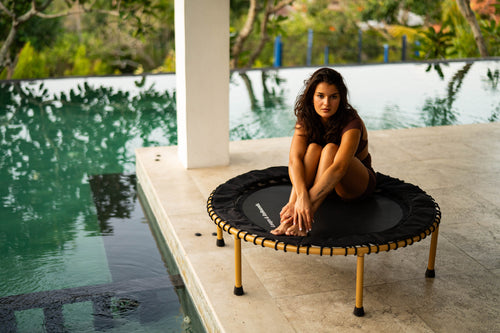





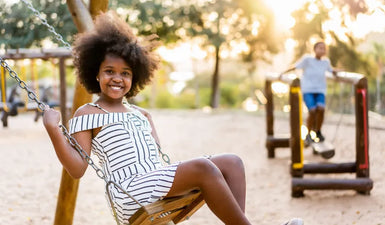
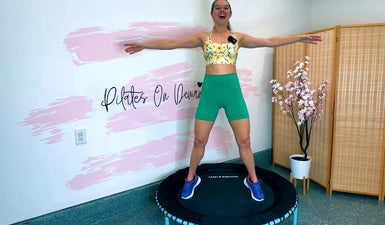
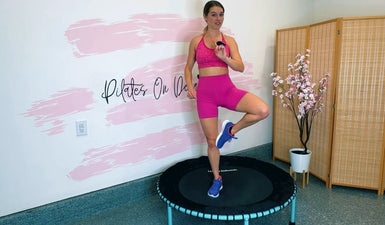
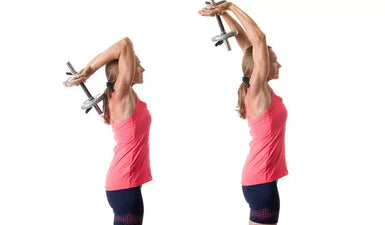
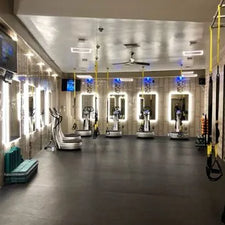

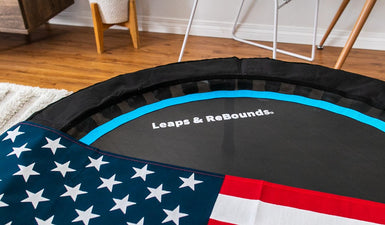
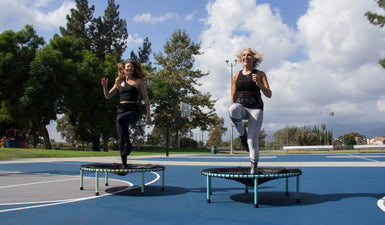

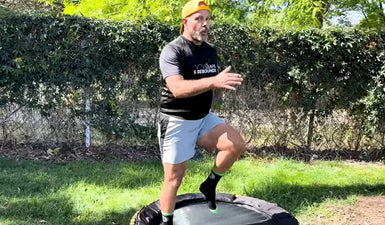








0 comments